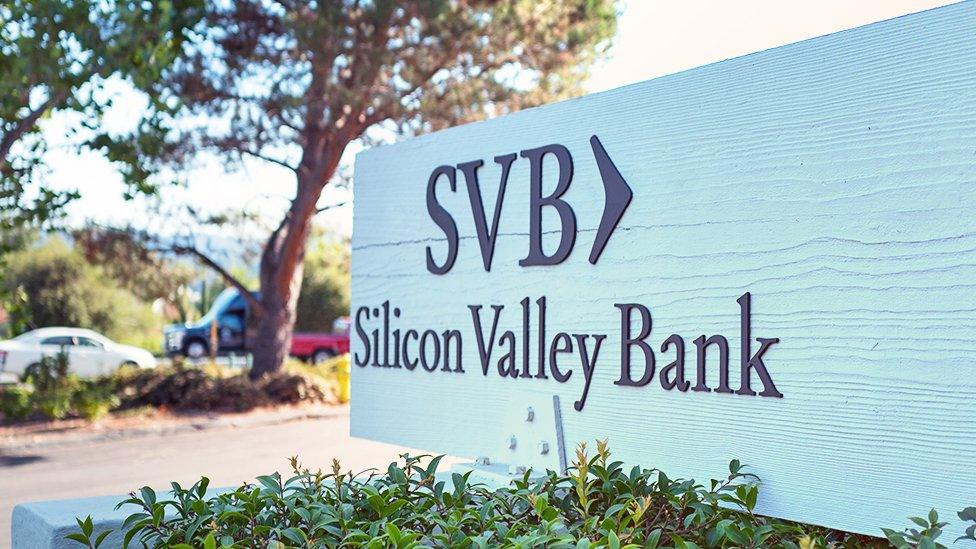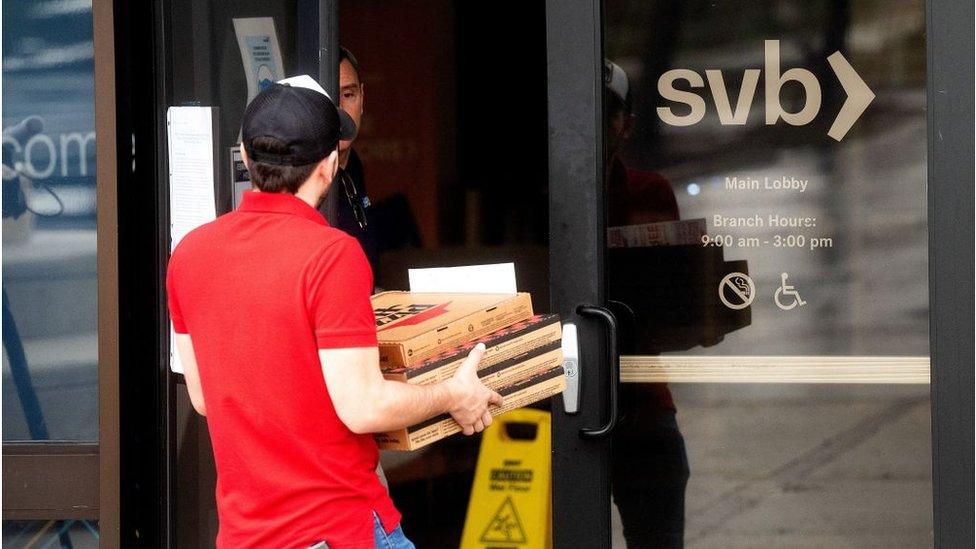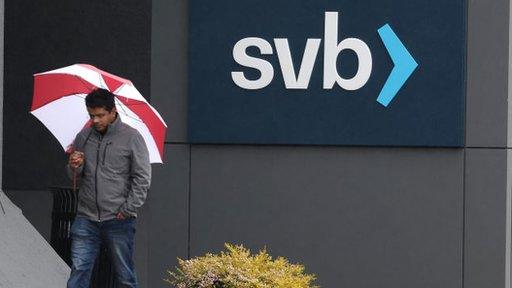Silicon Valley Bank: Rising interest rates will uncover more ticking bombs
- Published

"We have the coolest clients of any bank, anywhere…"
That was the claim made by Silicon Valley Bank UK last autumn as it celebrated becoming a fully UK-run subsidiary with a promotional video featuring cycle-in branches, ping-pong tables and dogs in the office.
At around the same time during the UK mini-Budget shock, there was a private fear whispered from regulators. Away from the political blame game, the unpublished Office for Budget Responsibility forecasts and reasonable regulatory questions about an obscure corner of the pension fund market, there was a really big picture concern for the global financial system.
After a decade and a half of near zero interest rates, the rapid rise in rates was going to lead to at best unforeseen, unintended consequences in hitherto stable corners of the system. At worst, the pensions "Liability Driven Investment" crisis was just the first of a series of ticking timebombs in debt markets that had become rather accustomed to borrowing almost for free.
'Herd like'
Silicon Valley Bank (SVB) has proved to be one of those ticking timebombs. Rising interest rates on government-backed borrowing contributed directly to the problems in the bank's balance sheet. Its key asset - concentrating entirely on the high tech sector - contributed to the herd-like flight of its US deposits last week.
There is no systemic risk to UK financial stability from the direct fall of Silicon Valley Bank's UK arm, authorities say. That is because it is very small. Authorities won't say how many customers it had, but it only reached £100m in deposits covered by the protection scheme last August. So we are talking thousands of customers rather than tens of thousands, and it is believed to have had several billion in deposits.
The UK arm is too small to impact UK financial stability directly. As a result of its establishment as a full UK subsidiary there should also be plenty of assets there to help mitigate the outflow of deposits. But it is considered economically important to many potentially high growth companies. Its customers' business model means they typically have low profits and revenues, and draw down funds from the bank.
Who are those customers? There are two types in the UK - start-up tech companies, and their funders in venture capital and private equity. The government thinks there is a serious risk to the tech sector. Others, such as former top Treasury boss Nick Macpherson fear that offering help beyond the normal £85,000 deposit protection limit could create serious "moral hazard", in other words reward risky behaviour.
Guarantees
Could the start-up business customers be treated differently to the big investors? The government is in talks to get other banks to take on the ailing UK arm of SVB or to offer some sort of guarantees to allow clients to pay wages and suppliers. All this comes as the chancellor is planning to make the UK's tech future a centrepiece of his Budget on Wednesday.
Ordinary UK depositors at other banks should be reassured. This is a very specialist bank, only serving customers in a specific sector. However, what is happening in the US is another matter. US regulators do not want to bail out sophisticated tech investors who take financial risks with the promise of fabulous returns.
But they will be keen to provide enough reassurance to avoid a run on deposits spreading to smaller banks. If that happened it could cast a shadow over other stock markets and the world economy too. So this does matter for UK economic policy and US financial stability. It could also be a canary in the coalmine for other unknown risks as the financial system is upended by the recent end of nearly free money.
Related topics
- Published12 March 2023

- Published10 March 2023

- Published11 March 2023
